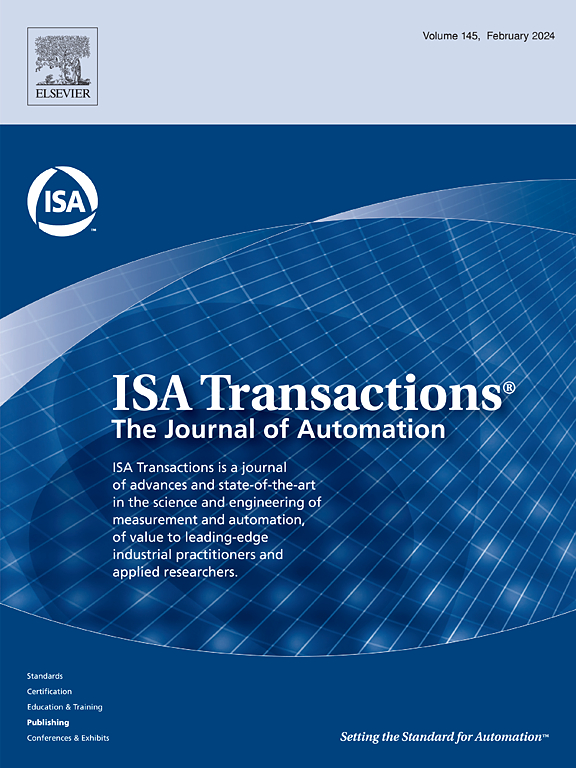A Proportional–Integral–Derivative type regulation scheme with non-Lipschitz control actions for mechanical systems with constrained inputs
IF 6.3
2区 计算机科学
Q1 AUTOMATION & CONTROL SYSTEMS
引用次数: 0
Abstract
Motivated by the benefits that recent finite-time continuous control approaches have proven to give rise, this work aims to design a proportional–integral–derivative (PID) type control scheme for the global regulation of constrained-input mechanical systems that incorporates design features characteristic of such finite-time continuous algorithms. This is proven to be achieved through a more general PID type control structure that incorporates exponential weights on the P and D type terms, through which such control actions are permitted to loose Lipschitz-continuity at the desired equilibrium values. This entails an important challenge consisting on the introduction of an appropriate analytical framework and the development of a suitable closed-loop analysis through which the resulting design is properly supported. The study is complemented by experimental tests which show that appropriate (less-than-unity) values on the incorporated exponential weights indeed give rise to closed-loop improvements characteristic of finite-time continuous control approaches, such as reduction of overshoot on the position error responses and of the control effort, alleviating such a performance adjustment task.
针对输入受限的机械系统的非 Lipschitz 控制行动的比例-积分-微分型调节方案。
最近的有限时间连续控制方法已被证明能带来诸多益处,受此激励,本研究旨在设计一种比例-积分-派生(PID)型控制方案,用于受限输入机械系统的全局调节,该方案结合了此类有限时间连续算法的设计特点。事实证明,这可以通过一种更通用的 PID 控制结构来实现,这种结构包含了 P 和 D 类项的指数权重,通过这种结构,可以允许这种控制行动在所需的平衡值上松动 Lipschitz 连续性。这带来了一个重要的挑战,即引入一个适当的分析框架,并开发一个合适的闭环分析,从而为由此产生的设计提供适当的支持。实验测试对该研究进行了补充,结果表明,适当的指数权重值(小于统一值)确实能带来有限时间连续控制方法所特有的闭环改进,如减少位置误差响应的过冲和控制力度,从而减轻性能调整任务。
本文章由计算机程序翻译,如有差异,请以英文原文为准。
求助全文
约1分钟内获得全文
求助全文
来源期刊

ISA transactions
工程技术-工程:综合
CiteScore
11.70
自引率
12.30%
发文量
824
审稿时长
4.4 months
期刊介绍:
ISA Transactions serves as a platform for showcasing advancements in measurement and automation, catering to both industrial practitioners and applied researchers. It covers a wide array of topics within measurement, including sensors, signal processing, data analysis, and fault detection, supported by techniques such as artificial intelligence and communication systems. Automation topics encompass control strategies, modelling, system reliability, and maintenance, alongside optimization and human-machine interaction. The journal targets research and development professionals in control systems, process instrumentation, and automation from academia and industry.
 求助内容:
求助内容: 应助结果提醒方式:
应助结果提醒方式:


